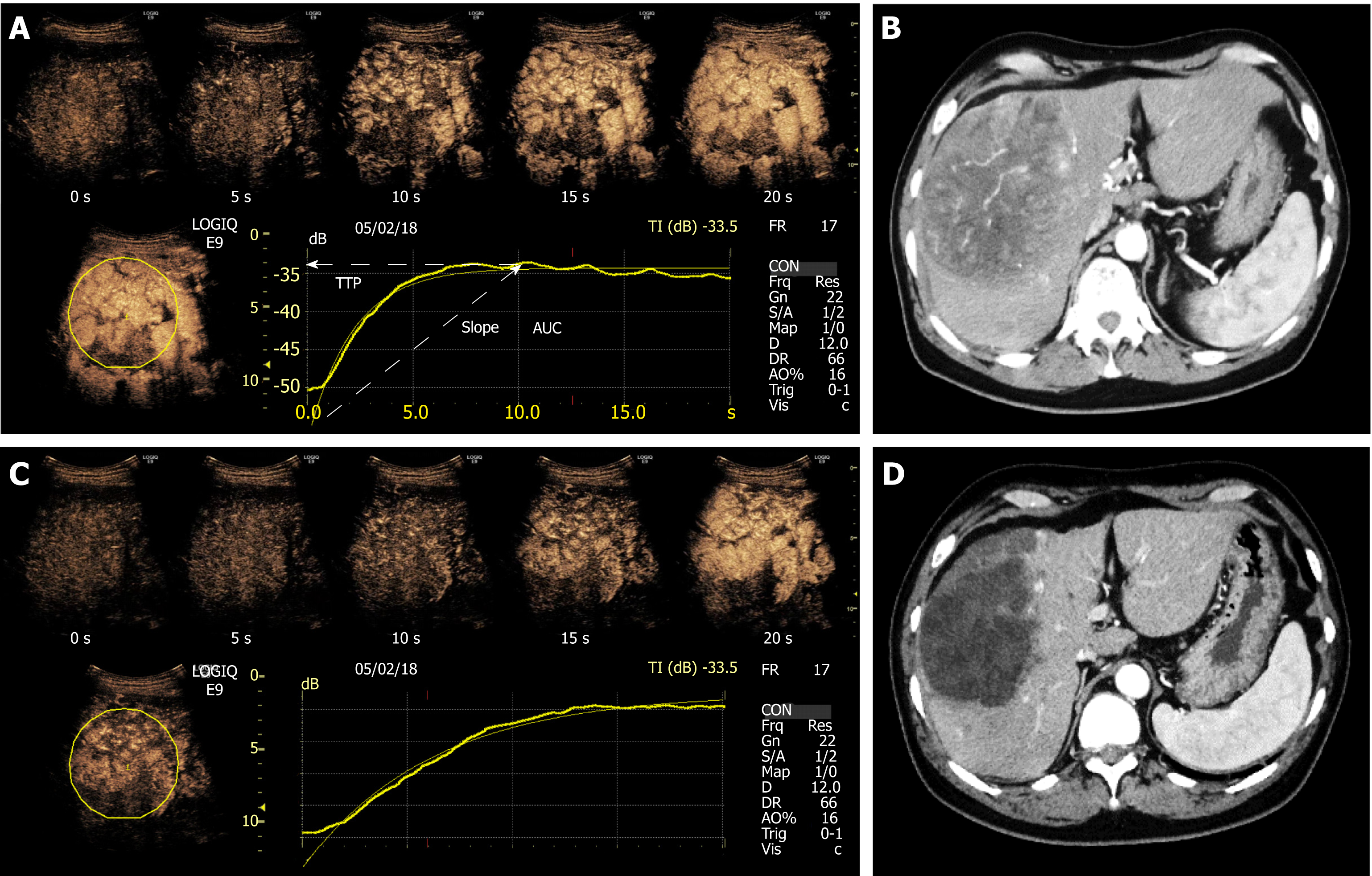Copyright
©The Author(s) 2019.
World J Gastroenterol. May 21, 2019; 25(19): 2365-2372
Published online May 21, 2019. doi: 10.3748/wjg.v25.i19.2365
Published online May 21, 2019. doi: 10.3748/wjg.v25.i19.2365
Figure 1 Representative case of a 69-year-old man with unresectable hepatocellular carcinoma treated with lenvatinib (12 mg/d).
A: Contrast-enhanced ultrasound (CEUS) imaging in the arterial phase at Day 0 and time-intensity curve (TIC) analysis. The region of interest was established within the demarcation margins of the target tumor. B: CEUS imaging at Day 7 and TIC analysis. The slope became gentle, and indicated a delay in TTP and a decrease in the area under the curve. C: Computed tomography (CT) image at Day 0. D: CT image at 8 wk. Therapeutic response was evaluated as partial response using the modified Response Evaluation Criteria in Solid Tumors. TTP: Time to peak; AUC: Area under the curve.
- Citation: Kuorda H, Abe T, Fujiwara Y, Okamoto T, Yonezawa M, Sato H, Endo K, Oikawa T, Sawara K, Takikawa Y. Change in arterial tumor perfusion is an early biomarker of lenvatinib efficacy in patients with unresectable hepatocellular carcinoma. World J Gastroenterol 2019; 25(19): 2365-2372
- URL: https://www.wjgnet.com/1007-9327/full/v25/i19/2365.htm
- DOI: https://dx.doi.org/10.3748/wjg.v25.i19.2365









